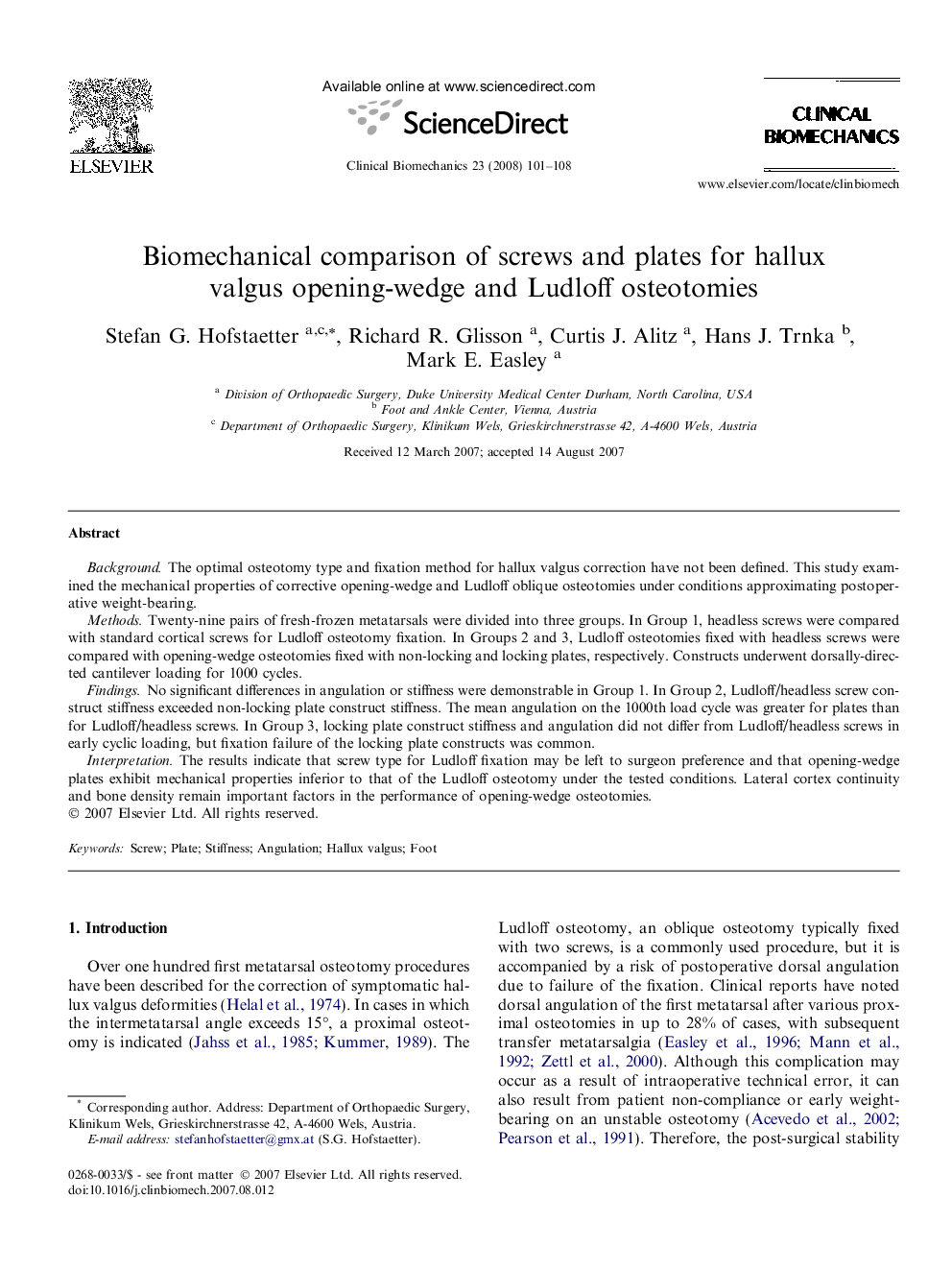| Article ID | Journal | Published Year | Pages | File Type |
|---|---|---|---|---|
| 4051671 | Clinical Biomechanics | 2008 | 8 Pages |
BackgroundThe optimal osteotomy type and fixation method for hallux valgus correction have not been defined. This study examined the mechanical properties of corrective opening-wedge and Ludloff oblique osteotomies under conditions approximating postoperative weight-bearing.MethodsTwenty-nine pairs of fresh-frozen metatarsals were divided into three groups. In Group 1, headless screws were compared with standard cortical screws for Ludloff osteotomy fixation. In Groups 2 and 3, Ludloff osteotomies fixed with headless screws were compared with opening-wedge osteotomies fixed with non-locking and locking plates, respectively. Constructs underwent dorsally-directed cantilever loading for 1000 cycles.FindingsNo significant differences in angulation or stiffness were demonstrable in Group 1. In Group 2, Ludloff/headless screw construct stiffness exceeded non-locking plate construct stiffness. The mean angulation on the 1000th load cycle was greater for plates than for Ludloff/headless screws. In Group 3, locking plate construct stiffness and angulation did not differ from Ludloff/headless screws in early cyclic loading, but fixation failure of the locking plate constructs was common.InterpretationThe results indicate that screw type for Ludloff fixation may be left to surgeon preference and that opening-wedge plates exhibit mechanical properties inferior to that of the Ludloff osteotomy under the tested conditions. Lateral cortex continuity and bone density remain important factors in the performance of opening-wedge osteotomies.
